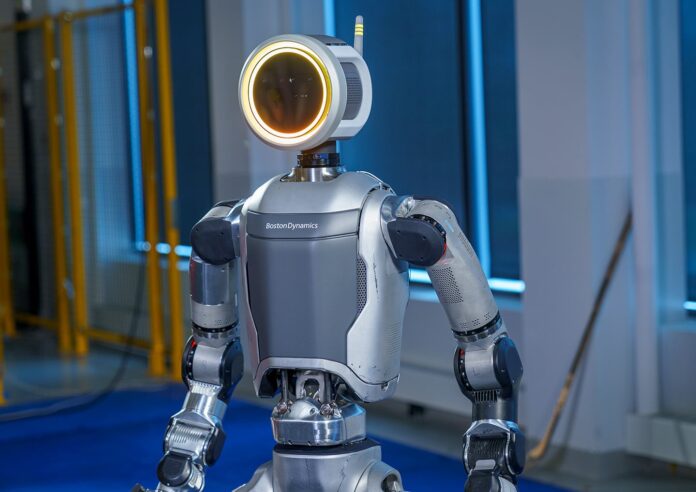
Science fiction has embraced the idea of humanoid robots capable of doing what we humans can do. Isaac Asimov conceived of three laws to govern robot behaviour. Since then others have added to Asimov’s three. Today, companies are building these robots with some planning to or already using them in warehouse and manufacturing operations. Teaching robots to learn to do human jobs, however, is not easy. It involves a lot of software coding, simulation and repetitive task training.
With the advent of artificial intelligence (AI) machine learning and neural networks it is now making it possible to do more than teach a robot to peel a potato. It now becomes possible for that robot to share what it has learned with its peers to create a fleet of potato peelers. That’s what the researchers at Toyota Research Institute (TRI) are creating.
TRI is a cutting-edge research institute advancing the capabilities of robots working with humans and this week it joined in partnership with Boston Dynamics to have the latter use its Large Behaviour Models (LBMs) with Atlas, a general-purpose humanoid robot I first wrote about back in 2013.
LBMs incorporate generative AI and use diffusion policy (DP) to teach robots new behaviours through demonstration rather than by encoding and uploading algorithms. The robot learns by being guided by a human through a demonstration. It then is left to practice mastering the skill. Once learned, it can share its knowledge with similar robots.
How does DP work? The technical explanation talks about stochastic Langevin dynamics and noise trajectories in training datasets with modelling removing each piece of noise to refine outputs. What this simply means is the robot is learning first by guidance and then by using trial and error to perfect a routine.
As a learning methodology, TRI has found training robots with DP is significantly faster than using other robotic learning techniques such as Policy Composition (PoCo) which involves multiple human interactions and simulations to teach robots new skills a task at a time.
More recently, TRI has been working with Sparse Diffusion Policy (SDP) designed to address multitasking and continual learning. SDP combines task-specific learning with selective activation using expert content drawn from LBMs. The robot adds different expert content pieces to its existing knowledge without requiring any retraining. For multitasking robots, it means they can move from one operation to another with little to no new computational inputs and retraining downtime.
Before the development of DP, robots were limited to simple “pick and place tasks” states TRI’s Ben Burchfiel. DP however has made it possible to maximize a robot’s potential within an existing sensory environment without new programming or extensive training. TRI is using DP to teach a robot and leave it to practice. Within a day the robot has mastered the skill and incorporated that knowledge which it can share in a classroom with other robots in what TRI calls its “kindergarten for robots.” States TRI Vice President, Russ Tedrake, “It’s just amazing to see the tasks that the robots can perform. Even a year ago, I never would have expected that robots would become this skilled.”
Boston Dynamics is probably best known for its four-legged robodogs which have gained notoriety over the years. Atlas, its humanoid robot, has gone through numerous iterations since first introduced. The latest version incorporates whole-body human behaviours including AI-based manipulation skills.
Scott Kuindersma, Senior Director of Robotics Research at Boston Dynamics will co-lead the partnership with TRI’s Tedrake to leverage the strengths of both companies to use the physical capabilities of the newest Atlas robot. It can incorporate whole-body bimanual manipulation behaviours.
Atlas will be given a range of tasks to learn and data collected from its performance will help to train TRI’s LBMs. The goals will be to demonstrate the ability to use large, pre-trained models with robot fleets to enable rapid acquisition of new whole-body skills. The [rpgra, will also include demonstrating a safe working environment for co-working humans with robots with these acquired adaptive skillsets learned using diffusion policy training and AI-based LBMS.








